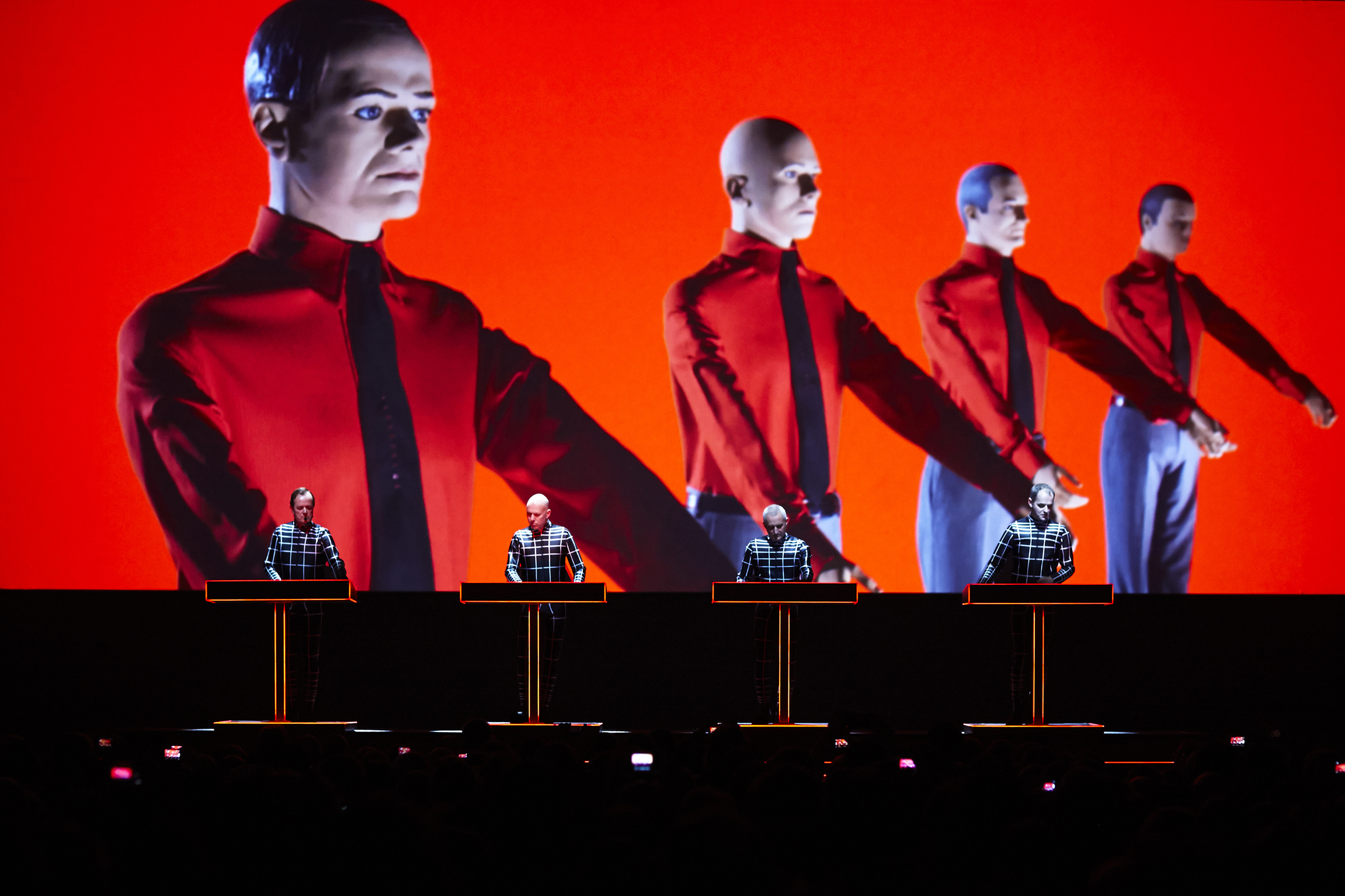From January 6th to 13th, 2015, the Neue Nationalgalerie presents the electronic pioneers KRAFTWERK with the 3D concert series “The Catalog – 1 2 3 4 5 6 7 8” on eight evenings. In this multimedia event, surround sound and 3D projections will blend perfectly with the architecture of Mies van der Rohe's transparent universal space.
With the appearance of KRAFTWERK, the Nationalgalerie is saying goodbye to the important building, which has hosted numerous collection presentations and exhibitions from 1968 to the present day, and which will now close from January 2015 for several years of renovation.
With their 3D concert series “The Catalog – 1 2 3 4 5 6 7 8”, KRAFTWERK will focus on one of their legendary music albums on eight evenings from January 6th to 13th, 2015. The respective performance of the entire album is complemented by a selection of other compositions from their entire oeuvre. Following their own history, the albums are listed in chronological order: 1 Autobahn (1974), 2 Radio-Activity (1975), 3 Trans Europa Express (1977), 4 The Man-Machine (1978), 5 Computer World (1981), 6 Techno Pop (1986), 7 The Mix (1991) and 8 Tour de France (2003).
The multimedia project KRAFTWERK was founded in 1970 by Ralf Hütter and Florian Schneider in the context of the experimental art scene in Düsseldorf. At the same time, they built the legendary electronic Kling-Klang studio, where all KRAFTWERK albums were conceived, composed and produced. Numerous live performances took place in the art museums and galleries of the surrounding Rhineland.
KRAFTWERK have written music history for more than four decades and celebrated success around the world. They are considered the forefathers of various musical styles such as electro, hip hop, synth pop, minimal and especially techno. Since its beginnings in the early 1970s, KRAFTWERK have been associated with the developments of the most modern technologies and have anticipated and significantly shaped the soundtrack of our digital computer age. Very early on, with their electronic sounds and synthetic voices, the automatic and machine rhythms, with their sound poetry and the highly reduced, condensed texts as well as a well-designed robot appearance, they took up the theme of a world dominated by machines, computers and data, both musically as well as linguistically and visually.
